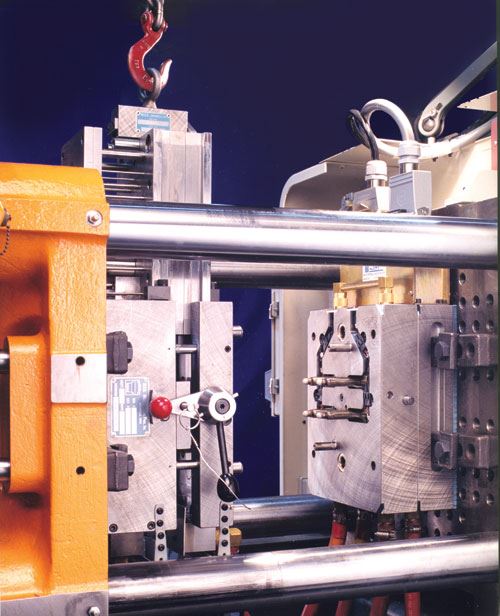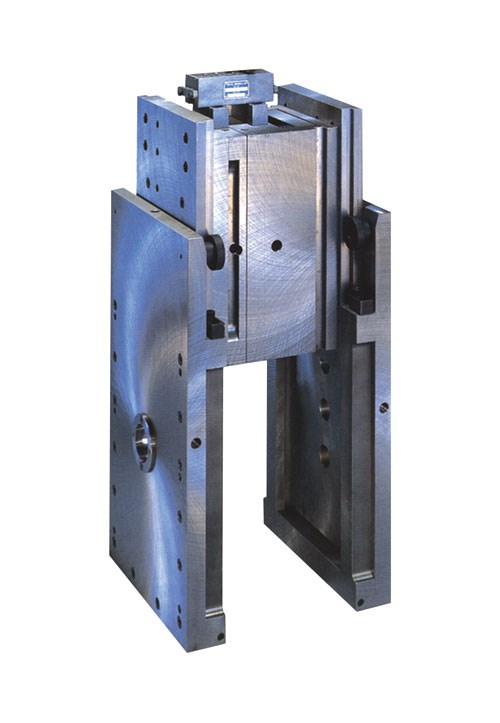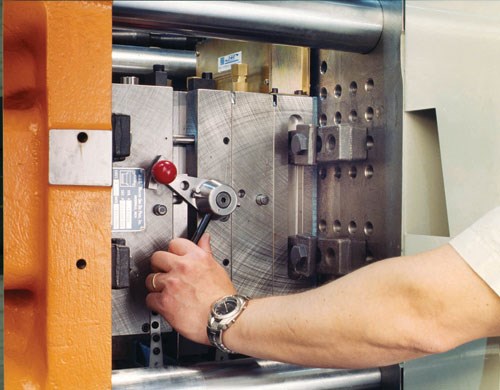How Moldmakers Can Reduce Production Costs and Maintain Precision
Using a mold base quick-change/hot runner combination in your mold designs can result in flexible, interchangeable precision.
Share
Read Next
One of the greatest challenges facing moldmakers today is reducing production costs while still maintaining high levels of precision. Moldmakers have frequently relied on one of two technologies to help them accomplish this: hot runner systems or mold base quick-change systems. Hot runner systems produce cleaner, more precise parts and eliminate material waste. Mold base quick-change systems reduce the time it takes to swap out molds and enable molders to produce different parts in the same system. Both technologies have distinct advantages, but recent advancements now enable moldmakers to combine all the benefits of mold base quick-change and hot runner technology in one system.
By understanding the potential of this type of system, designers can now engineer the cost-saving features of both products into a mold, and as a result, significantly reduce the cost of part production. This article will focus on the benefits of combining these systems in mold designs, because the more moldmakers know about this technology, the better they will be able to improve their offer to molders.
The Mold Base
The mold base quick-change system approach is based on an unlimited number of companion insert molds that are easily interchanged within a single quick-change frame. The frame remains in the molding machine during mold changeovers, resulting in increased uptime and cost reductions. It works with any standard mold base in any molding machine up to 500-ton capacity.
The frame is installed without modifying the machine. Standard mold bases equipped with companion ear plates are interchanged within this adapter frame. Just one adapter frame accommodates an unlimited number of standard mold bases. While these frames can remain in the machine indefinitely, they are easily transferred to other machines. No other special mounting hardware is required.
This system is based on a unique slide and clamp approach to mold changeovers. Standard mold bases equipped with ear plate sets simply slide in and out of the quick-change adapter frame. Just one adapter frame is needed for each molding machine selected for quick-change operation.
For installation simply clamp the quick-change adapter frame to the platens of the molding machine. Companion ear plates are bolted to the standard mold bases to be interchanged in the machine. Both the machine and the standard mold bases are now ready for production changeovers in less than 10 minutes.
The Hot Runner
Hot runner systems were created out of a need to mold plastic parts better, faster and at a lower cost. When they are selected, installed and working properly, they do just that—delivering better part quality, faster speeds, less scrap, lower labor costs, higher-volume production and increased efficiency. However, achieving the maximum potential requires proper knowledge, planning, design and execution.
One of the primary benefits of hot runner systems is their speed. The cost savings associated with producing products faster is a driving force behind the growing demand for hot runners. Fractions of a second in cycle time add up quickly and can make a large difference to the bottom line.
Hot runners also cut cost by greatly reducing waste. The very nature of the technology eliminates runner waste and any costs necessary to re-grind or dispose of scrap. The technology also enables a variety of increased process efficiencies, as well as the capability for extreme precision. An example of how exact hot runner systems can be is the electric valve gate. This technology uses variable pin positioning in 0.001” increments, giving an ultimate level of control to molders.
The Combination
By using a combined mold base quick-change/hot runner system, a molder is able to quickly swap different mold inserts into a mold and produce a variety of parts in the same system with minimal downtime. The systems are especially well-suited for increasing efficiency in the production of automotive, medical, electronic and small appliance parts, as well as for a variety of other applications.
With a traditional mold base and hot runner setup, a molder needs a new mold and new hot runner for each new part number. But by combining these powerful technologies, one can create an infinite number of different parts with just one hot runner and a quick-change system. For example, instead of using 10 separate mold and hot runner systems to create 10 different parts, a molder can use one hot runner with a mold base quick-change system and create those same 10 parts, saving more than 50 percent on costs.
Additionally, since the system incorporates hot runner technology, it keeps the polymer melt more uniform during the injection molding process. The hot runner precision produces cleaner, more accurate parts, which is especially beneficial for more complex part designs. The hot runners, compatible with any hot runner nozzles, also reduce material waste, cycle times and other costs.
Summary
Mold base quick-change/hot runner systems provide many advantages for moldmakers and molders alike. However, they’re not always the right solution. This is especially true, if the parts being produced aren’t similar in size and shape. The best way for moldmakers and part designers to determine whether these systems are suitable for a specific application is to work closely with a mold supply partner. Through collaboration, planning and implementing this technology, when appropriate, moldmakers and molders can experience all the benefits of both quick change and hot runner—reducing production costs and ensuring the highest levels of precision.
Related Content
Fundamentals of Designing the Optimal Cooling System
The right mold components can help improve mold cooling and thereby produce higher-quality parts.
Read MoreThe Benefits of Hand Scraping
Accuracy and flatness are two benefits of hand scraping that help improve machine loop stiffness, workpiece surface finish and component geometry.
Read MoreMaintaining a Wire EDM Machine
To achieve the ultimate capability and level of productivity from your wire EDM on a consistent, repeatable and reliable basis, regular maintenance is a required task.
Read MoreMoldmakers Deserve a Total Production Solution
Stability, spindle speed and software are essential consideration for your moldmaking machine tool.
Read MoreRead Next
Are You a Moldmaker Considering 3D Printing? Consider the 3D Printing Workshop at NPE2024
Presentations will cover 3D printing for mold tooling, material innovation, product development, bridge production and full-scale, high-volume additive manufacturing.
Read MoreHow to Use Strategic Planning Tools, Data to Manage the Human Side of Business
Q&A with Marion Wells, MMT EAB member and founder of Human Asset Management.
Read MoreHow to Use Continuing Education to Remain Competitive in Moldmaking
Continued training helps moldmakers make tooling decisions and properly use the latest cutting tool to efficiently machine high-quality molds.
Read More_970x90 3.png;maxWidth=970;quality=90)






.jpg;maxWidth=300;quality=90)


















